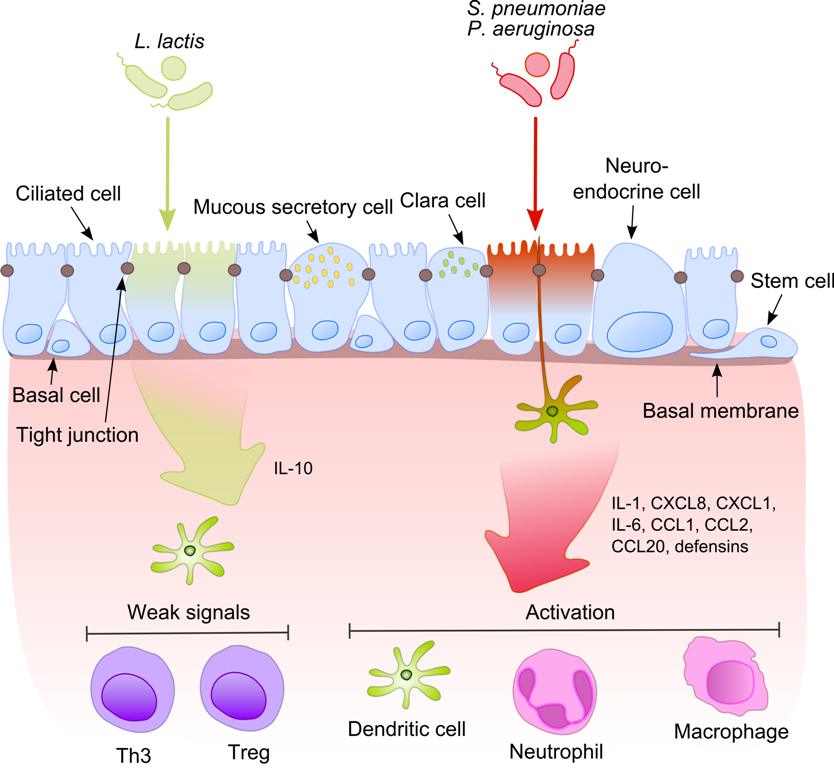Nonpathogenic organisms on:
[Wikipedia]
[Google]
[Amazon]
 Nonpathogenic organisms are those that do not cause
Nonpathogenic organisms are those that do not cause
 Nonpathogenic organisms are those that do not cause
Nonpathogenic organisms are those that do not cause disease
A disease is a particular abnormal condition that adversely affects the structure or function (biology), function of all or part of an organism and is not immediately due to any external injury. Diseases are often known to be medical condi ...
, harm or death to another organism. The term is usually used to describe bacteria
Bacteria (; : bacterium) are ubiquitous, mostly free-living organisms often consisting of one Cell (biology), biological cell. They constitute a large domain (biology), domain of Prokaryote, prokaryotic microorganisms. Typically a few micr ...
. It describes a property of a bacterium – its inability to cause disease. Most bacteria are nonpathogenic. It can describe the presence of non-disease causing bacteria that normally reside on the surface of vertebrates
Vertebrates () are animals with a vertebral column (backbone or spine), and a cranium, or skull. The vertebral column surrounds and protects the spinal cord, while the cranium protects the brain.
The vertebrates make up the subphylum Vertebra ...
and invertebrates
Invertebrates are animals that neither develop nor retain a vertebral column (commonly known as a ''spine'' or ''backbone''), which evolved from the notochord. It is a paraphyletic grouping including all animals excluding the chordate subphylum ...
as commensals. Some nonpathogenic microorganisms
A microorganism, or microbe, is an organism of microscopic size, which may exist in its single-celled form or as a colony of cells. The possible existence of unseen microbial life was suspected from antiquity, with an early attestation in ...
are commensals on and inside the body of animals and are called microbiota
Microbiota are the range of microorganisms that may be commensal, mutualistic, or pathogenic found in and on all multicellular organisms, including plants. Microbiota include bacteria, archaea, protists, fungi, and viruses, and have been found ...
. Some of these same nonpathogenic microorganisms have the potential to cause disease, or being pathogenic, if they enter the body, multiply and cause symptoms
Signs and symptoms are diagnostic indications of an illness, injury, or condition.
Signs are objective and externally observable; symptoms are a person's reported subjective experiences.
A sign for example may be a higher or lower temperature ...
of infection
An infection is the invasion of tissue (biology), tissues by pathogens, their multiplication, and the reaction of host (biology), host tissues to the infectious agent and the toxins they produce. An infectious disease, also known as a transmis ...
. Immunocompromised
Immunodeficiency, also known as immunocompromise, is a state in which the immune system's ability to fight infectious diseases and cancer is compromised or entirely absent. Most cases are acquired ("secondary") due to extrinsic factors that affe ...
individuals are especially vulnerable to bacteria that are typically nonpathogenic; because of a compromised immune system
The immune system is a network of biological systems that protects an organism from diseases. It detects and responds to a wide variety of pathogens, from viruses to bacteria, as well as Tumor immunology, cancer cells, Parasitic worm, parasitic ...
, disease occurs when these bacteria gain access to the body's interior. Genes
In biology, the word gene has two meanings. The Mendelian gene is a basic unit of heredity. The molecular gene is a sequence of nucleotides in DNA that is transcribed to produce a functional RNA. There are two types of molecular genes: protei ...
have been identified that predispose disease and infection with nonpathogenic bacteria by a small number of persons. Nonpathogenic ''Escherichia coli
''Escherichia coli'' ( )Wells, J. C. (2000) Longman Pronunciation Dictionary. Harlow ngland Pearson Education Ltd. is a gram-negative, facultative anaerobic, rod-shaped, coliform bacterium of the genus '' Escherichia'' that is commonly fo ...
'' strains normally found in the gastrointestinal tract
The gastrointestinal tract (GI tract, digestive tract, alimentary canal) is the tract or passageway of the Digestion, digestive system that leads from the mouth to the anus. The tract is the largest of the body's systems, after the cardiovascula ...
have the ability to stimulate the immune response in humans, though further studies are needed to determine clinical applications.
A particular strain of bacteria can be nonpathogenic in one species but pathogenic in another. One species of bacterium can have many different types or strains. One strain of a bacterium species can be nonpathogenic and another strain of the same species can be pathogenic.
References
{{portal bar, Biology Bacteriology Gram-positive bacteria Gram-negative bacteria Immune system